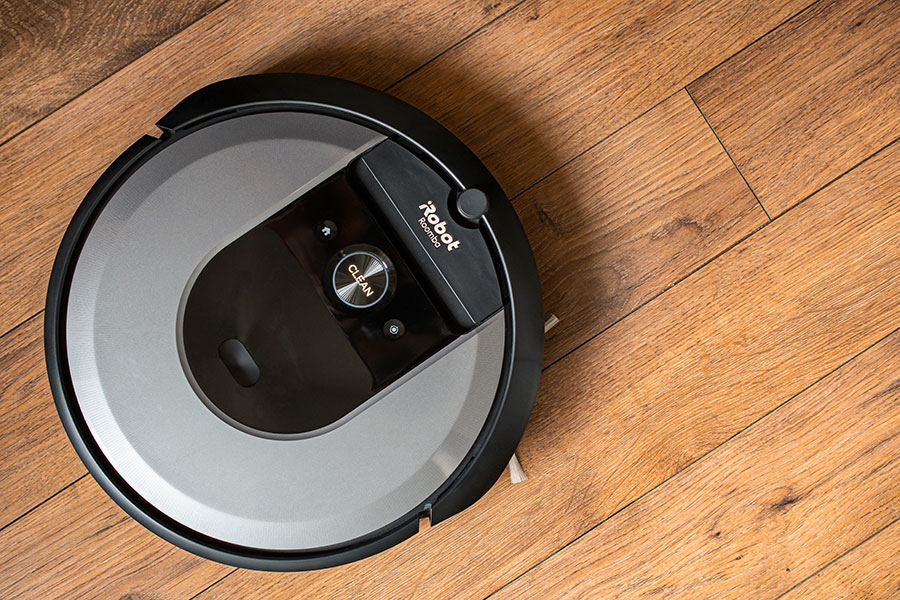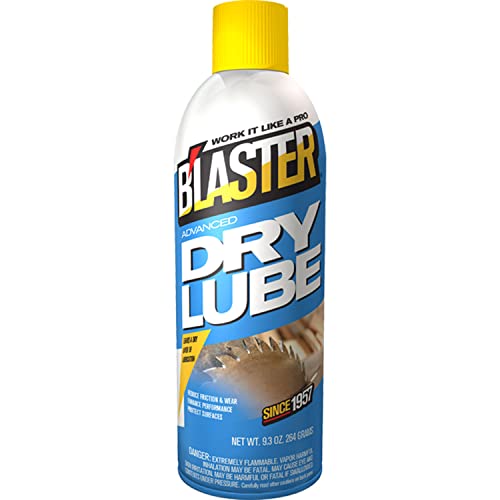
Roomba Super Loud? Here’s How to Make it Quieter
Cleaners Talk is reader-supported. This post contains affiliate links, we may earn a commission at no additional costs to you. As an Amazon Associate we earn from qualifying purchases.
It’s no secret that a Roomba produces a loud noise whenever it goes for a cleaning run. However, a Roomba should not be louder than the average washing machine or a dishwasher.
If your Roomba is becoming louder than usual, it is caused by one of three things:
- The brush roller bearings are full of hair and debris
- The dustbin is completely full
- The filter is dirty and hinders the airflow
In this post, we will help you diagnose what is causing the loud noise coming from your Roomba. Once you have figured out the problem, we will show you the solution to each one.
Why is Your Roomba So Loud and Noisy?
A Roomba can become louder than usual if the brush roller bearings are full of hair and debris, or the filter is very dirty, which hinders the airflow of the robot’s vacuum.
Additionally, if its dustbin is completely full, a Roomba can produce more noise than it should because it has no capacity to store the dust it collects along the way.
But before you troubleshoot your loud Roomba, are you sure you need to do it in the first place? Chances are, your Roomba is operating at its normal noise level.
Before you try to make your Roomba quieter, we recommend learning about how loud a Roomba is.
How Loud is a Roomba?
On average, a Roomba can produce a noise level of 70 decibels. To put that number into perspective, 70 decibels is as loud as a washing machine or a dishwasher, and is considered a moderate noise level.

A Roomba is as loud as the average washing machine or a dishwasher.
However, not every Roomba will reach that threshold. The total range of the various Roomba models run between 60 to 70 decibels, with some being louder than others. The difference between the sound levels is the included features of the device and their suction power.
Models like the Roomba 694 will max out at around 70 decibels, while the powerhouse model Roomba 980 will sit up at the higher 70 decibels mark. Bigger models, like the Roomba 980, have more suction power, larger brushes, and are slightly larger.
These features all translate into the need for more powerful motors to move the robot around and provide the effective cleaning you dreamed about when you invested in your Roomba.
If your goal is to get the quietest Roomba, however, then we recommend getting the iRobot Roomba s9+ because it is equipped with the Quiet Clean feature. It has more advanced features and cleans with less noise. around 64 dB.
But, if you already own a Roomba, and you don’t have extra money to spare, then read on below to find out how to make your Roomba quieter without having to spend a dime.
How to Make Your Roomba Quieter

If your Roomba is running at a louder noise than normal, you need to address your robot immediately. Here are three things to inspect and fix to make your Roomba quieter:
To make your Roomba quieter, inspect the brush roller bearings and clean them. Then, empty the dustbin and clean its filter to make sure your Roomba has enough airflow. You can also enable the “Quiet Drive” feature to minimize the noise while it’s running.
Below are three steps explained in greater detail:
1. Clean the brush roller bearings from hair
The most common reason why your Roomba is noisy and loud is because the brush roller bearings are full of hair. You will be surprised by the amount of hair inside the brush roller bearings.
Turn off the robot and remove the brush rollers. If you take a closer look, debris, hair, and a collection of dust somehow make their way into the bearing housing on the main brush roller.
To fix the noisy brushes, take the cap off both ends of the Roomba brush rollers and clean out the insane amount of debris and hair wrapped inside. If you have pets, then you may find more hair than you should.
You can learn how to clean all of the Roomba brushes right here.
Remember, it is very important to keep your Roomba clean, including periodically cleaning the brush roller bearings. It’s also a good idea to lubricate them with dry lube. to keep them running without the annoying loud noise. If the Roomba parts are not well-lubricated, the robot can squeak.
- Provides superior, long-lasting lubrication for every household lubricant need
- Use on locks and catches, hinges, cables, window tracks and glass, rope, door tracks and conveyor belts
- It's also safe for use on plastics
Heads up: Did you know that not all robot vacuums have brush rollers? If you are tired of having to clean the brush rollers all the time, why not consider a tangle-free robot vacuum? Check out the top 3 right here.
2. Enable the “Quiet Drive” feature
According to iRobot, the Quiet Drive feature is a new feature that disables the Roomba's cleaning mode while it's moving to a specific area before or after a cleaning run.
The goal is to minimize the Roomba’s noise when it is activated.
Basically, the Roomba’s brush roller will not spin while the Quiet Drive feature is turned on, so it will not vacuum anything while it is going to a specific area. However, the side brush will continue to spin.
The Quiet Drive feature will only deactivate the Roomba while it's traveling to the designated area. After it reaches a specific area you have commanded it to clean, the Roomba will run as normal and produce its noise. The Roomba will be quiet again on its way back to the Home Base.
However, if your children and/or pets bring in small pebbles, rocks, or toys, it is important to clear these tiny objects around your house before activating the Quiet Drive feature.
If these are small items around the house, your Roomba will drag these rocks and pebbles across the floors to and from its destination whenever the Quiet Drive mode is turned on.
3. Empty the dustbin and clean the filter before each cleaning run
If you want to reduce the noise and make a Roomba quieter, be sure to empty the dustbin and clean the filter before a cleaning run. A combination of a full dustbin and a clogged filter hinders the Roomba’s vacuum airflow, producing more noise than it should.
Fortunately, cleaning the filter is very easy. No matter your Roomba model, you can learn how to properly clean the filter and its dustbin, including how to replace them.
Invest in a Quiet Roomba!
If you are constantly annoyed and cannot stand the loud noise anymore, then we recommend investing in a quieter Roomba. Of course, you should only do this if you have the means.
- THE DREAM TEAM OF CLEAN - With Imprint Link Technology, the Roomba s9 robot vacuum and Braava jet m6 robot mop team up to vacuum then mop automatically in...
- CLEANS UP AFTER YOU, AND ITSELF - Forget about vacuuming for months at a time with the Clean Base Automatic Dirt Disposal that allows the s9 to empty...
- DEEPEST CLEAN - With 40x the suction power, the superior 3-Stage Cleaning System lifts, loosens, then eliminates debris and pet hair from deep within your...
The iRobot Roomba s9+ comes equipped with the Quiet Clean, which uses lower power and produces lower noise. You can even choose to customize your clean and amp up the power level for a deep clean in smaller spaces, such as a rug or entryway. By far, the Roomba S9 is the quietest Roomba to date!
If your Roomba is producing a loud beeping noise while running or charging, please troubleshoot it:




